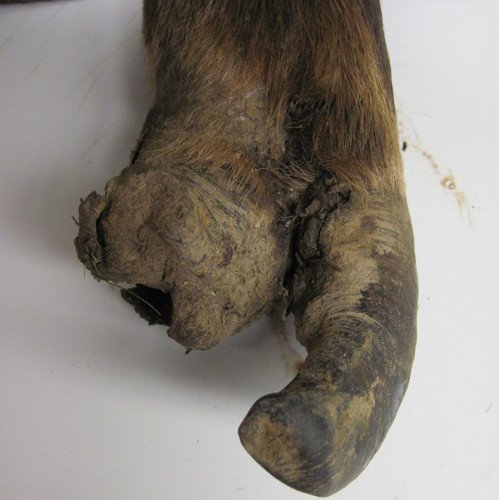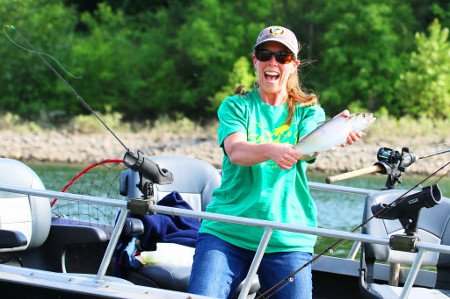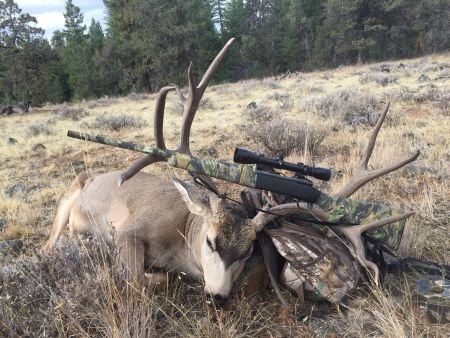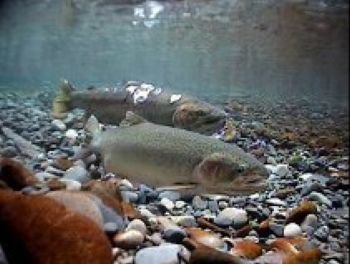Report Elk with Hoof Disease Online at ODFW’s New Elk Hoof Disease Reporting Page
Hunters and others who spend time in the outdoors in northwest Oregon are asked to be on the lookout for elk hoof disease

(SALEM, Ore.) — Hunters and others who spend time in the outdoors in northwest Oregon are asked to be on the lookout for elk hoof disease, a problem for southwest Washington’s elk that could also be affecting Oregon’s elk.
Elk hoof disease is a bacterial-associated syndrome causes severe lameness in elk. Elk with the disease have deformed and overgrown or broken sloughed hooves, abscesses in the hoof soles and chronic laminitis.
Report elk with hoof disease online at ODFW’s new elk hoof disease reporting page which can also be found off the Hunting Resources webpage under Hot Topics. If you can’t use the online reporting page, emailWildlifeHealth@state.or.us or call 1-866-968-2600 with the information.
Elk hoof disease first appeared in southwest Washington elk herds between 2002-2005 and became more widespread in 2007-08. In some of the area’s elk herds, 20-90 percent of the animals are showing lameness.
ODFW wildlife veterinary staff and biologists are part of the working group investigating the disease in Washington. They are keeping a close eye on Oregon’s elk as well, particularly in northwest Oregon, as there is known interchange between Oregon and Washington elk across the Columbia River.
“We really appreciate hunters and anyone else who spends time in the outdoors being on the lookout for this disease,” says Colin Gillin, ODFW wildlife veterinarian. “This information will help us determine if the disease is becoming a threat to Oregon’s elk and work to limit its spread.”
About elk hoof disease
ODFW wildlife biologists and veterinarians are working to understand exactly what is causing the emergence of elk hoof disease. Hoof diseases in ungulates are complicated because there are many reasons an animal could develop the lesions associated with hoof disease (including bacterial, viral, parasites, nutritional imbalance, or traumatic injury). The wet conditions of western Oregon and Washington also contribute to the growth of several types of bacteria that can cause the deformities.
Initial lab results identify the bacteria from the genus Treponema as contributing to hoof disease in southwestern Washington’s elk. Historically, Oregon has seen sporadic cases of hoof disease and confirmed the presence of multiple species of bacteria in several elk with hoof infections. Recently several elk in Oregon have been observed with diseased hooves that look very similar to the affected Washington elk. Laboratory confirmation of Treponema requires special handling and testing; future Oregon samples will undergo this testing.
Though antibiotics, foot baths, cleaning pens and other methods can help treat similar problems in livestock, there are no practical ways to treat free-ranging elk with hoof disease.
Note that hoof disease does not affect the meat of elk or other ungulates; nor is there evidence to suggest elk hoof disease poses a risk to human health. Hunters do not need to be concerned about personal health problems due to any contact with animals showing signs of elk hoof disease. However, chronically lame elk may be in poorer body condition and appear thin.
ODFW’s veterinary staff asks that any hunter who harvests an elk with infected or overgrown hooves collect the damaged hooves and report online. Email our wildlife health staff at WildlifeHealth@state.or.us or call 1-866-968-2600 to arrange collection of the hooves.
Oregon’s big game hunting seasons are happening now through the end of the year. Rifle deer season begins statewide tomorrow, Saturday Oct. 4. Oregon’s elk seasons happen in mid-October and November.
Source: Oregon Department of Fish and Wildlife



